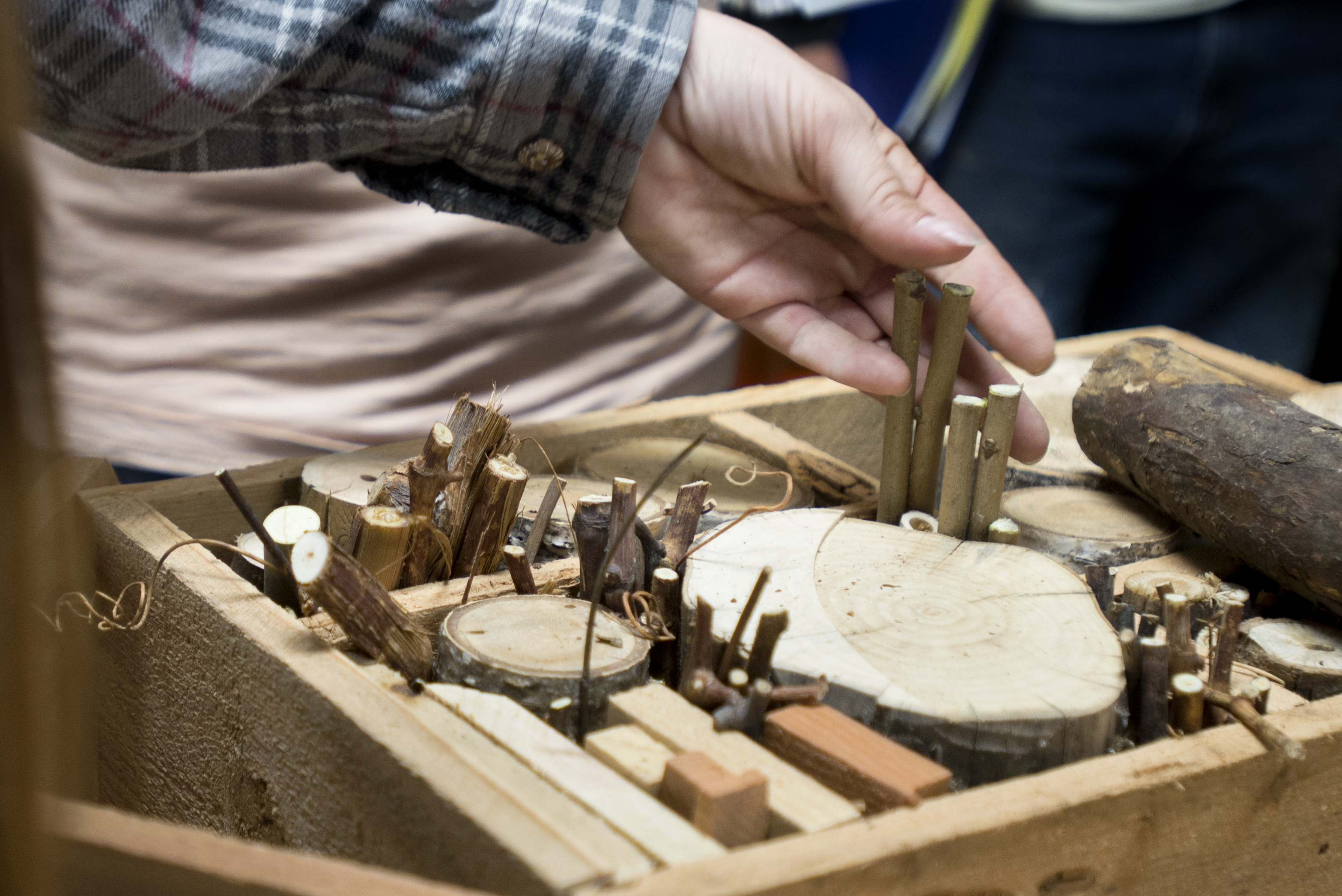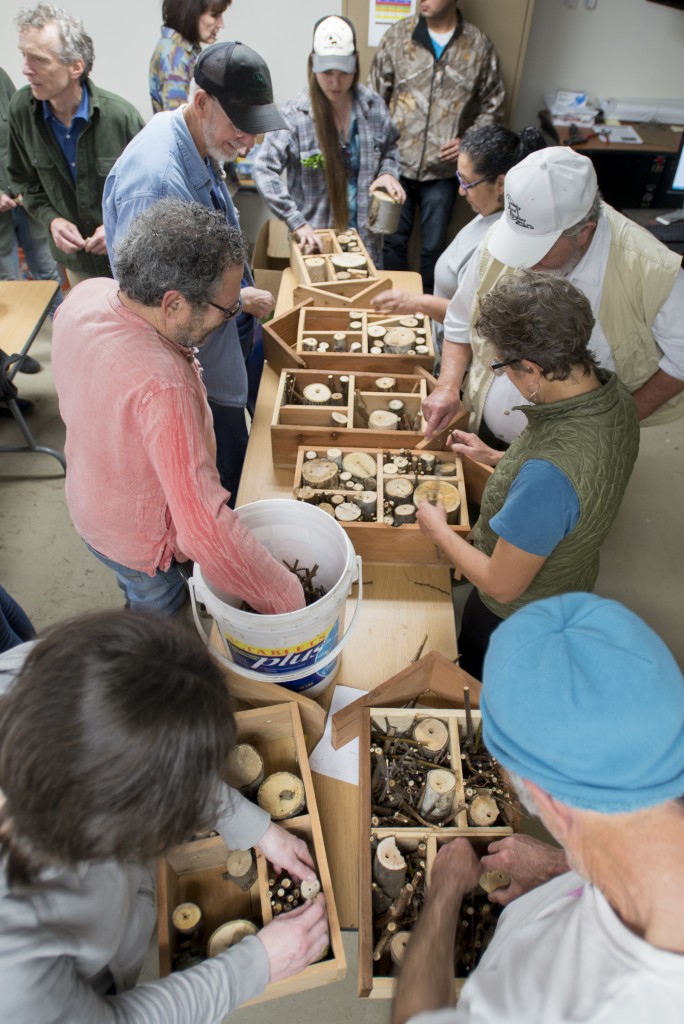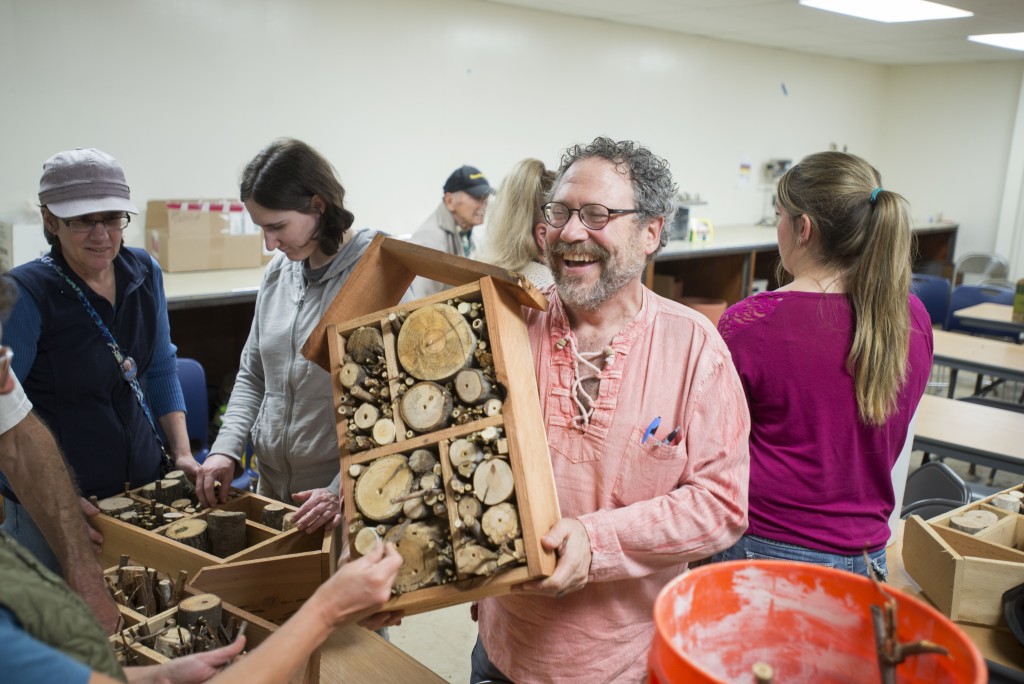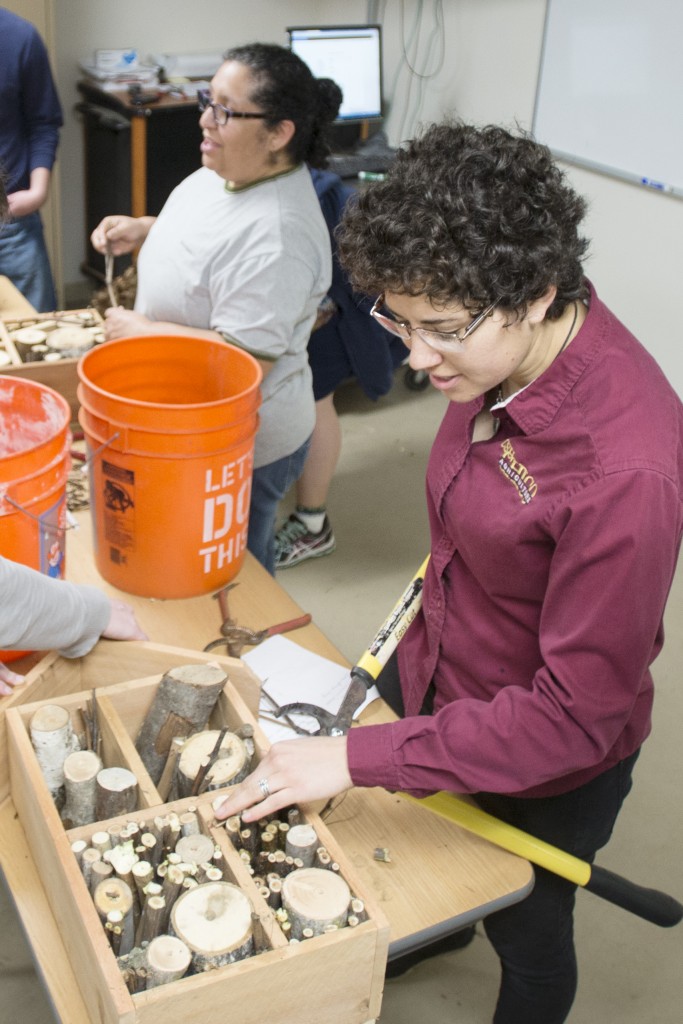Building a Better Bee Hotel

Solitary bees like to live alone in cavities such as holes drilled into logs or those made by stuffing boxes full of sticks. (Jessica Bartlett / Student Photographer)
A Hilton or a Holiday Inn? Truth be told, bees just really want a room.
The University Farm was abuzz with discussion this month, as more than 60 students and community members crowded every corner of a classroom for a workshop on constructing wild bee habitats commonly known as bee hotels. Led by professor Lee Altier and plant science major Natasha Aybar, participants not only learned why hotels are so helpful, but had a hands-on lesson in construction.

Of the 1,600 species of bee in California, many are solitary creatures that seek out spaces to live in the ground or other small cavities. Some species are in decline because of a loss of feeding and nesting habitat, and bee hotels are an easy answer to providing more habitat and improving biodiversity, Aybar said.
Supplied with pre-drilled sticks, blocks and scrawny strands of kiwi vine, participants stuffed pre-made wooden boxes with enough crevices and compartments to attract even the least neighborly of bees.
“It’s like Tetris for adults,” gushed Cori Zandstra, who is working toward her BS in agricultural education. “It’s arts and crafts class.”
The boxes Zandstra and others built will provide enticing and critical habitats for wild, solitary bees. Farming practices that cultivate only one crop at a time have led to a lack of diversity for their food source, as well as increased pest outbreaks and amounts of pesticides, herbicides, and fertilizers.
“Of course, [crops bloom] at once, and when the blooming stops, the pollinators lose their food source,” Altier said.
Traditional suburban landscaping also has been no friend to bees, Aybar said, noting that lawns and lack of flowers deplete sources of former sustenance.
“These bees need to eat, and what they eat is nectar from flowers,” she said.
They can be constructed out of just about anything—cedar shingles, bamboo, blocks of wood, and even plastic piping—as long as there are plenty of holes for hiding.
Cavity sizes, whether drilled or natural, can range from drill-bit to golf-ball sized, and should be 3 to 6 inches deep, spaced a three fourths inch apart, and have smooth interiors.
The best placement is under eaves or against a wall, high off the ground to protect from disturbances, and in a south- or east-facing spot where the morning sun can warm up the cold-blooded bees tucked inside.

Helping the everyday gardener
“I know just where to put this—right on my cypress tree,” said Chico resident and workshop participant Irma Arroyo-Long, as she imagined watching her hotel guests from the safety of her house window.
She’s attended other workshops at the University Farm, but this one sparked her interest because of her concerns for bees and food security.

“It’s nice knowing we have a university that’s not looking at just one side of the issue,” she said. “They know we are an organic community with concerns about keeping pesticides out of the soil. When you help the everyday gardener do it, you are taking it a step further.”
Zandstra heard about the class from Altier during his Holistic Management class, and imagined it would be good hands-on learning for a research paper she is drafting on the decline in pollinators.
“I thought it would be really cool that I would be here to learn ways to bring back the pollinators,” she said. “When you get the instruction and you go out and do it, it’s easier to learn.”
A self-proclaimed “science nerd,” Zandstra loves that Chico State teaches not just traditional agriculture but sustainable practices as well. She is now part of the Sustainable Agriculture Club and looks forward to sharing what she learned in the workshop with her fellow club members.
“Last year was my first semester here, and it changed my whole perspective on Chico State,” she said. “I’m super excited to be here.”
Aybar, who aspires to be a pest control advisor after graduation, said she was thrilled to share her passion about biodiversity with a greater audience.
“That’s one of the reasons I chose Chico—because of the interaction with the community,” she said.
The workshop was sponsored by a USDA grant as part of an effort to support specialty crops, small farms, and food production. Two of the constructed hotels are slated for installation at the University Farm.
For more information on bee hotels, visit the Xerces Society, the UC Berkeley Urban Bee Lab, or view the informational slideshow below. Future workshops at the University Farm, which are usually free and open to the public, can be found on the Cultivating Community website.


